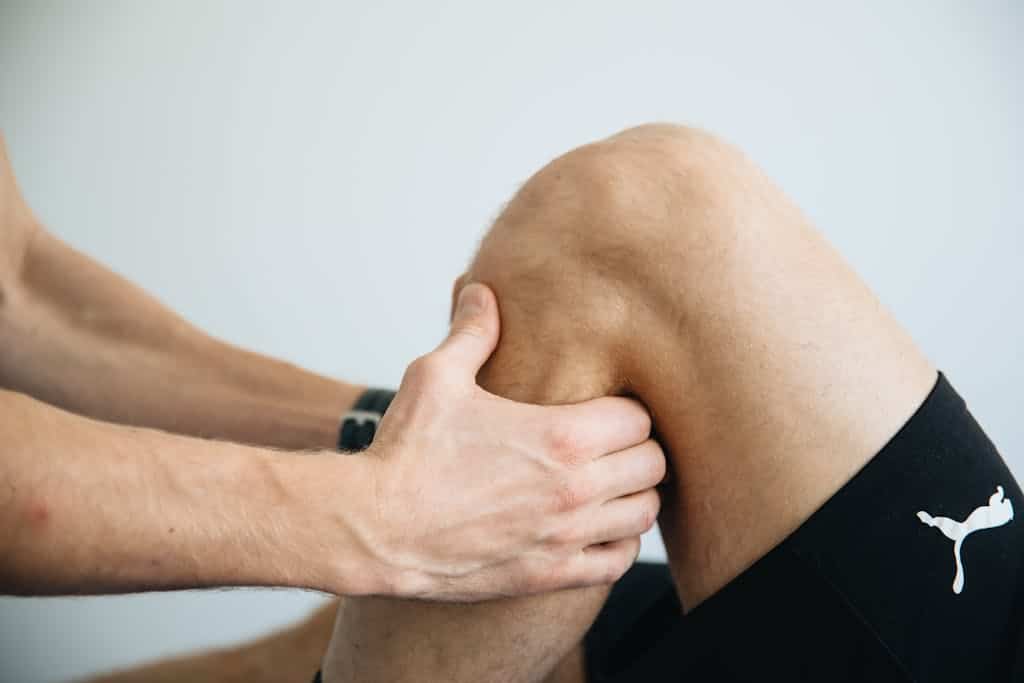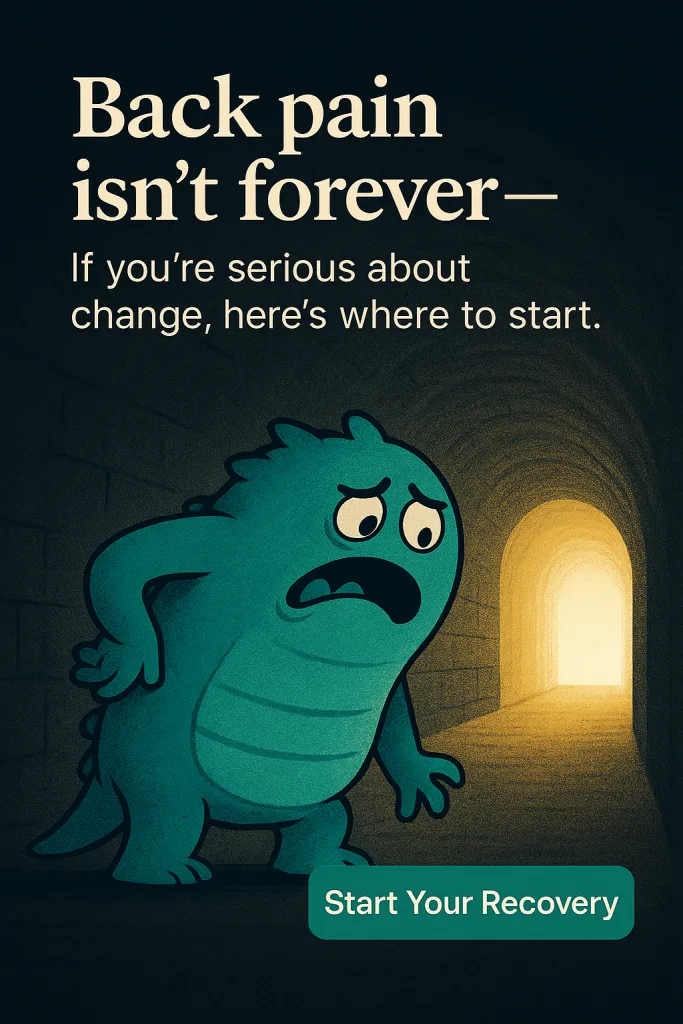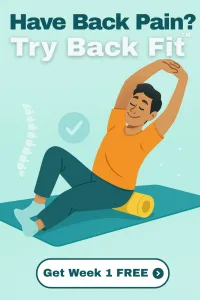Have you ever felt that sharp twinge at the back of your knee when trying to straighten your leg? You’re not alone. This specific type of knee pain affects many people and can range from a mild annoyance to a truly limiting condition.
The posterior knee region contains various structures that work together during leg movement. When you straighten your leg, several components including tendons, ligaments, muscles, and neural tissues are engaged. Any of these structures can become sources of pain when stressed or injured.
Recent research from early 2025 reveals some interesting findings about posterior knee pain. A study examining straight leg raise tests found that in 72.5% of cases, neural structures were primarily responsible for discomfort rather than muscular tension! Even more intriguing, gender appears to influence these patterns, with women showing higher rates of nerve-related discomfort during knee extension tests.
While occasional mild discomfort might not be cause for concern, persistent or severe pain warrants proper assessment. Understanding the underlying cause is essential for effective treatment and preventing long-term issues.
What causes pain behind the knee when straightening the leg?
When you experience pain at the back of your knee during leg straightening, several different structures could be responsible. Understanding these potential causes helps guide appropriate treatment.
Popliteus Tendinopathy
The popliteus is a small but important muscle that sits at the back of the knee. When its tendon becomes irritated or damaged, pain typically occurs during leg straightening activities. According to Physiopedia, this condition often results from mechanical factors such as foot position issues, which increase strain on the popliteus muscle-tendon unit. Athletes who run downhill frequently are particularly susceptible to this problem.
Signs of popliteus tendinopathy include specific tenderness behind the knee and pain during resisted external rotation movements. Many people report increased discomfort when trying to straighten the leg fully after prolonged sitting.
Posterior Cruciate Ligament (PCL) Injuries
The PCL is one of the main stabilising structures inside your knee joint. Though less commonly injured than its counterpart (the ACL), PCL damage can cause significant posterior knee pain. These injuries typically occur from direct impacts to the front of the knee, falls onto bent knees, or extreme hyperextension.
Medical News Today explains that PCL injuries often produce pain, swelling, and a feeling of instability when straightening the leg. Some people describe a sensation that the knee might “give way” during walking or stair climbing.
Hamstring Tendinopathy
The hamstring muscle group attaches at the back of the knee, and when these tendons become irritated, pain during leg straightening is a common symptom. This condition frequently affects runners, sprinters, and people who perform activities requiring sudden stops and starts.
Hamstring tendinopathy typically produces gradual-onset pain that worsens with activity. Dr. Robert LaPrade’s research indicates that morning stiffness and discomfort after prolonged sitting are also common complaints with this condition.
Baker’s Cyst
A Baker’s cyst (also called a popliteal cyst) is a fluid-filled sac that forms behind the knee joint. These cysts often develop as a response to other knee problems such as arthritis or cartilage tears. When you straighten your leg, the cyst may be compressed, causing pain.
Beyond pain, Bupa UK notes that symptoms often include swelling behind the knee that may worsen with activity and improve with rest. Some people report a tight, full sensation at the back of the knee.
Osteoarthritis
Knee osteoarthritis affects the cartilage that cushions the bones in your joint. As this cushioning wears down, pain during movement—including leg straightening—becomes common. A 2014 study published in the Journal of Orthopaedic & Sports Physical Therapy demonstrates that people with knee osteoarthritis often have restricted extension compared to those with healthy knees.
Pain from osteoarthritis typically develops gradually, worsens with activity, and may be accompanied by stiffness, especially in the morning or after periods of inactivity.
Neural Tension
Interestingly, recent studies suggest that neural structures contribute to posterior knee pain more often than previously thought. When nerves that run through the posterior knee region become irritated or compressed, they can create pain during leg straightening movements that stretch these structures.
The 2025 research on structural origins of discomfort found that symptoms of neural tension often include pain that radiates along the pathway of the nerve, sensations of tingling or numbness, and increased discomfort with certain positions that increase nerve stretch. Women appear more likely to experience nerve-related discomfort during knee extension tests compared to men.
What treatments help with pain behind the knee?
Treatment approaches for posterior knee pain vary depending on the underlying cause, severity, and your individual circumstances. Research supports several effective strategies that can help relieve discomfort and restore function.
Conservative Management Approaches
For most cases of posterior knee pain, conservative (non-surgical) treatment forms the foundation of care. This typically includes:
- Rest and activity modification: Temporarily reducing activities that worsen symptoms allows irritated tissues to settle. This doesn’t mean complete inactivity—rather, it means avoiding movements that reproduce your pain while maintaining appropriate levels of non-aggravating activity.
- Ice and heat: Cold therapy helps reduce acute inflammation and pain, while heat can improve tissue extensibility and blood flow in more chronic conditions. For acute injuries, applying ice for 15-20 minutes several times daily often provides relief.
- Anti-inflammatory medications: Over-the-counter options like ibuprofen may help manage pain and inflammation when used appropriately and as recommended by healthcare professionals.
Medical News Today reports that these fundamental approaches can significantly reduce symptoms in many cases of posterior knee pain, particularly in the early stages.
Manual Therapy Techniques
Hands-on treatment by qualified practitioners can be remarkably effective for certain types of posterior knee pain. A 2014 study documented significant improvements in knee extension range following a single 30-minute manual therapy session in people with knee osteoarthritis.
Beneficial manual techniques may include:
- Joint mobilisation: Gentle movement of the knee joint surfaces to improve mobility and reduce stiffness.
- Soft tissue techniques: Targeted massage and release methods for tight muscles and fascial restrictions around the knee.
- Neural mobilisation: Gentle techniques that help restore normal nerve movement and reduce neural tension.
- Myofascial release: Methods that address restrictions in the connective tissue surrounding muscles and joints.
Manual therapy often produces both immediate improvements in symptoms and movement and contributes to longer-term recovery when combined with appropriate exercise.
Targeted Exercises and Rehabilitation
Exercise therapy represents one of the most evidence-supported interventions for posterior knee pain. Research-backed exercises include:
- Quadriceps strengthening: Strengthening the front thigh muscles helps balance forces around the knee and reduces strain on posterior structures. For popliteus tendinopathy specifically, Physiopedia notes that eccentric quadriceps exercises in closed kinetic chain (with your foot in contact with a surface) show particularly good results.
- Hamstring flexibility work: Gentle stretching can reduce tension in tight hamstrings that may contribute to posterior knee pain. A progressive approach that respects pain limits is essential.
- Neural gliding exercises: For pain with a neural component, specific movements that gently mobilise nerve tissues without overstretching them can be helpful.
- Balance and proprioception training: Improving your body’s positional awareness and control enhances knee function during everyday activities.
This table outlines a simple progressive exercise plan that might be recommended:
| Phase | Focus | Example Exercises |
|---|---|---|
| Initial | Pain control, gentle movement | Heel slides, ankle pumps, isometric quadriceps |
| Intermediate | Strength building, improved range | Wall slides, straight leg raises, hamstring curls |
| Advanced | Functional training, return to activity | Step-ups/downs, single-leg balance, sport-specific drills |
Activity Modification Guidelines
For conditions like popliteus tendinopathy, research supports specific activity modifications:
- Avoid running until the knee is pain-free during daily activities
- Limit downhill running for at least six weeks after symptoms resolve
- Consider low-impact alternatives like cycling for cardiovascular fitness
- Modify sports techniques that might exacerbate symptoms
These thoughtful adjustments allow continued activity while supporting the healing process.
Advanced Treatment Options
When conservative approaches don’t provide sufficient relief, other interventions may be considered:
- Therapeutic injections: Corticosteroid or hyaluronic acid injections can help manage certain conditions, particularly those involving significant inflammation.
- Shockwave therapy: Some studies support this non-invasive treatment for tendon conditions around the knee.
- Orthotic devices: Custom or pre-made foot supports can address biomechanical issues that contribute to knee problems.
- Surgical interventions: For severe ligament injuries like complete PCL tears or persistent tendon problems that don’t respond to conservative care, surgical options might be appropriate.
The latest research suggests that only about 15% of people with posterior knee pain ultimately require advanced interventions beyond exercise and manual therapy, highlighting the effectiveness of conservative care for most cases.
For stretching, the timing matters. Evidence suggests that:
- Pre-activity stretching should focus on dynamic (moving) rather than static (held) stretches.
- Post-activity stretching can include longer-held static stretches when tissues are warm.
Research from PMC indicates that participants who consistently performed a structured warm-up had significantly fewer knee complaints over a 12-month period compared to those who warmed up sporadically or not at all.
Conclusion
Pain in the back of your knee when straightening your leg can arise from various sources—from tendons and ligaments to muscles and nerves. Understanding the specific cause of your symptoms is essential for effective management.
Recent research has expanded our knowledge of posterior knee pain, revealing that neural structures contribute to symptoms more frequently than previously thought. Studies also show that manual therapy can produce measurable improvements in knee extension, particularly for people with osteoarthritis.
The good news is that most cases respond well to conservative treatment approaches. Targeted exercises, appropriate activity modification, and manual therapy techniques form the core of effective management for many people. Advanced interventions are available for persistent cases that don’t improve with these approaches.
Prevention strategies such as proper warm-up routines, strengthening exercises, appropriate footwear, and technique modifications can significantly reduce your risk of developing posterior knee pain. Early intervention for minor symptoms often prevents progression to more serious problems.
If you’re experiencing persistent or severe pain behind your knee when straightening your leg, seeking professional assessment is the recommended first step. A thorough evaluation will identify the underlying cause and guide you toward the most appropriate treatment approach for your specific situation.
Frequently Asked Questions
Is it normal to feel pain behind my knee when I straighten my leg?
Occasional mild discomfort might occur with certain movements, particularly after unusual or strenuous activity. However, persistent or significant pain when straightening your leg is not normal and warrants attention. Recent research indicates that up to 75% of people experience some degree of tension in either neural or muscular structures during full leg straightening, but this should not typically cause pain during normal daily activities.
How long does it take to recover from posterior knee pain?
Recovery time varies widely depending on the specific cause, severity, and individual factors. Minor tendon irritation might resolve in 2-3 weeks with appropriate management, while more significant ligament injuries could take 3-6 months or longer. Following a structured rehabilitation program tends to produce the best outcomes regardless of the specific diagnosis. Studies show that consistent adherence to recommended treatment plans can reduce recovery time by up to 30%.
Should I use heat or ice for pain behind my knee?
Both have their place in managing posterior knee pain. Ice is typically most helpful for acute injuries (within the first 48-72 hours) and for reducing pain and inflammation after activity. Heat often works better for chronic conditions and for improving tissue flexibility before exercise. Some people benefit from alternating between the two. When in doubt, notice which provides more relief for your specific situation.
Can I still exercise with pain behind my knee?
This depends on the cause and severity of your symptoms. In many cases, modified exercise is not only possible but beneficial for recovery. The key principle is to avoid activities that significantly increase your pain during the activity or cause prolonged worsening of symptoms afterward. Working with a physiotherapist can help identify appropriate modifications that allow continued activity while supporting the healing process.
When should I see a physiotherapist for posterior knee pain?
Consider seeking professional assessment if:
- Pain persists beyond a few days despite rest and basic self-care
- You’re unable to fully straighten or bend your knee
- You notice swelling, redness, or warmth around the knee
- The pain significantly affects your daily activities or sleep
- You’re unsure about the cause of your symptoms
Early intervention often leads to faster resolution and helps prevent the development of compensatory movement patterns that can create additional problems.












